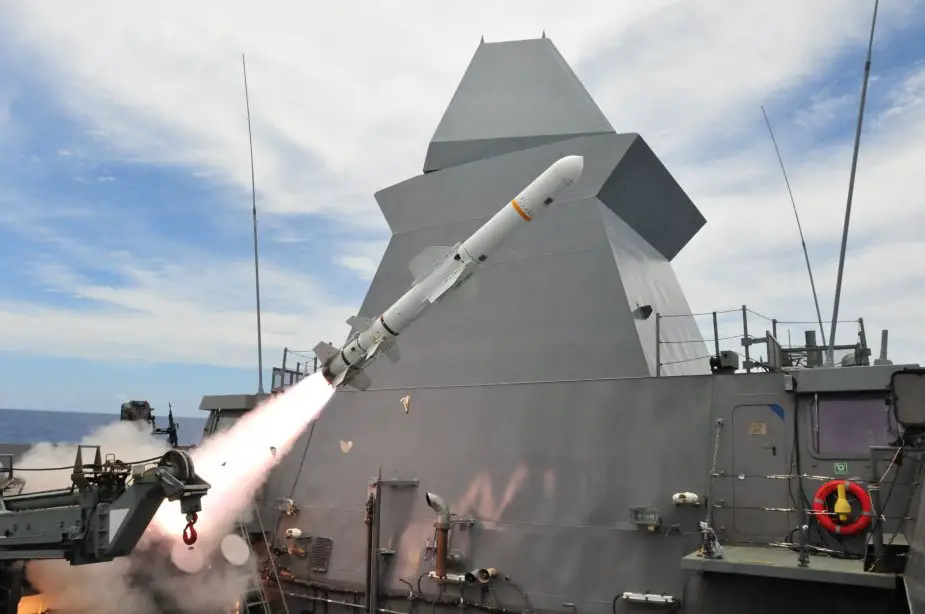Breaking news
United Kingdom will supply Harpoon anti-ship missiles to Ukraine.
According to information published by the Daily Mail on April 7, 2022, the United Kingdom will supply Harpoon anti-ship missiles to Ukraine in order to break the Russian siege of Ukrainian Black Sea ports.
Follow Navy Recognition on Google News at this link
 RSS Tenacious firing Harpoon anti-ship missile (Picture source: Twitter account of Ryan Chan)
RSS Tenacious firing Harpoon anti-ship missile (Picture source: Twitter account of Ryan Chan)
The Harpoon is an all-weather, over-the-horizon, anti-ship missile developed and manufactured by McDonnell Douglas (now Boeing Defense, Space & Security). The AGM-84E Standoff Land Attack Missile (SLAM) and later AGM-84H/K SLAM-ER (Standoff Land Attack Missile - Expanded Response) are cruise missile variants.
The Block 1 missiles were designated AGM/RGM/UGM-84A in US service and UGM-84B in the UK. Block 1B standard missiles were designated AGM/RGM/UGM-84C, and Block 1C missiles were designated AGM/RGM/UGM-84D. Block 1C used a terminal attack mode that included a pop-up to approximately 1,800 meters (5,900 ft) before diving into the target; Block 1B omitted the terminal pop-up, and Block 1C provided a selectable terminal attack mode.
To strike targets on land and ships in port, the missile uses GPS-aided inertial navigation to hit a designated target aimpoint. The 227-kilogram blast warhead delivers lethal firepower against a wide variety of land-based targets, including coastal defense sites, surface-to-air missile sites, exposed aircraft, port/industrial facilities, and ships in port.
For conventional anti-ship missions, such as open-ocean and near-land, the GPS/INS eliminates midcourse guidance errors en route to the target area. The accurate navigation solution coupled with launch system improvements combines to offer better discrimination of target ships from islands, nearby landmasses, or other ships. These Block II improvements maintain Harpoon’s high hit probability against ships very close to land or traveling in congested sea lanes.
The Harpoon has been adapted for carriage on several aircraft, including the P-3 Orion, the P-8 Poseidon, the AV-8B Harrier II, the F/A-18 Hornet, and the U.S. Air Force B-52H bombers. The Harpoon was purchased by many nations, including India, Japan, Singapore, South Korea, Taiwan, the United Arab Emirates, and most NATO countries.



























